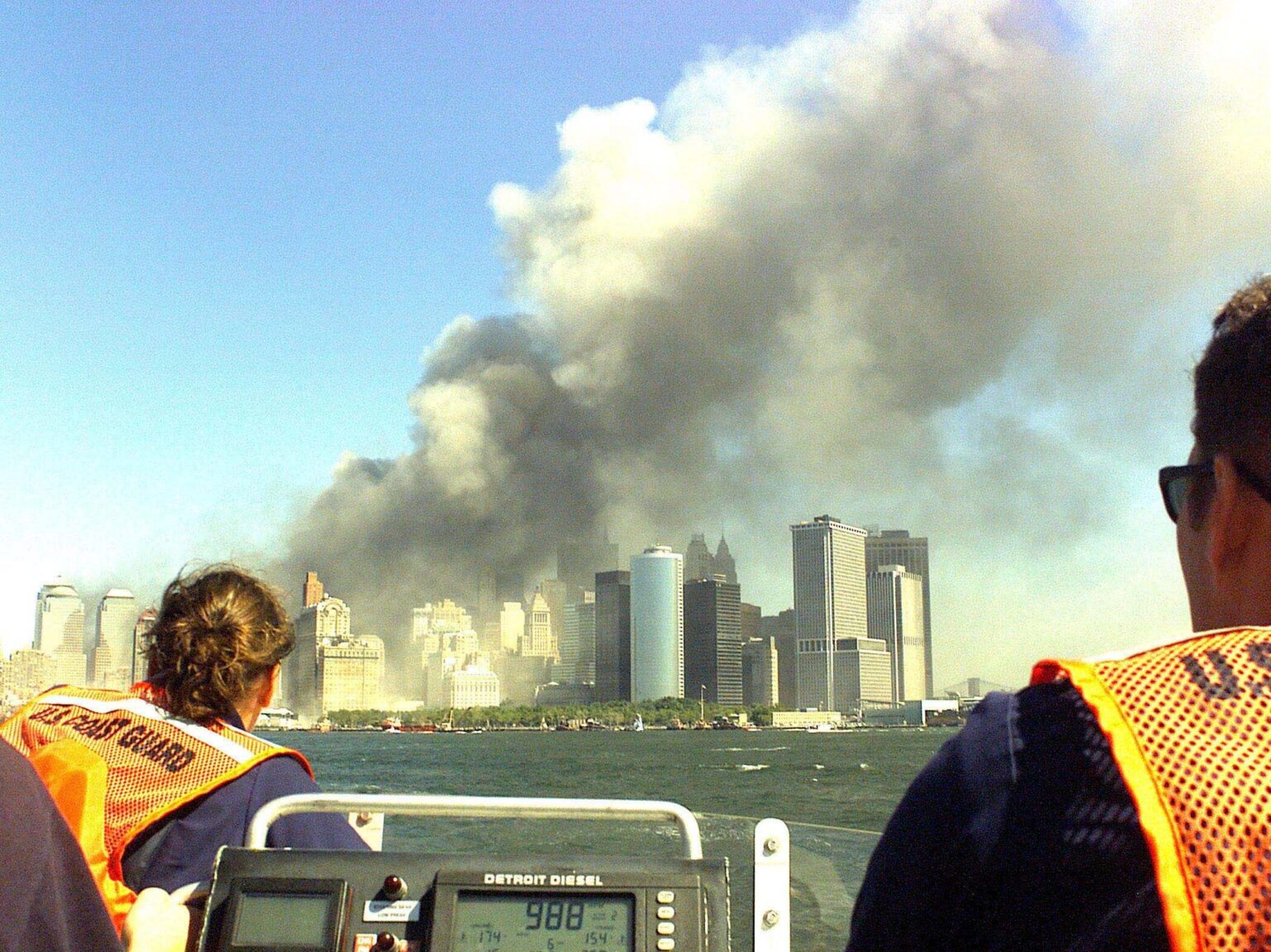Remembering 9/11: Lt. Michael Day and the Lower Manhattan Boatlift
On September 11, 2001, Lieutenant Michael Day was working at Coast Guard Activities New York preparing to leave for a meeting at Tower One of the World Trade Center when the command center alert came in. A plane had hit one of the World Trade Center towers. Then another hit.
“We were unable to get any reports from lower Manhattan since all the communications systems failed. It was chaotic. People from multiple agencies were responding to the scene without any unity of purpose,” he said. “There wasn’t a pre-planned response; there was no CONOP for how to respond to two planes crashing into the Towers.”
Not having a specific response plan for this situation, Day grabbed the closest thing he could think of to help – the OPSAIL 2000 plan.
“I knew it had a lot of ambulance staging areas. We had a lot of evacuation points identified. Although it wasn’t necessarily a full-scale evacuation plan, it had information,” he said.
As Day rushed out the door to head to the waterfront, Andrew McGovern, pilot of the 100-foot pilot boat NEW YORK, showed up for the meeting. They grabbed a bunch of extra lifejackets, the OPSAIL plan, a Coast Guard Ensign and headed for the pilot boat.
“I remember listening to the radio because by this time we were underway on the boat and it was just… chaos. Every channel you clicked to people were screaming, ‘Help, people are here… I’ve got someone hurt here’,” he said.
With a front row seat to the collapsing buildings, frightened people and distressing devastation, Day only momentarily worried about his own safety. With thousands of citizens needing help, he didn’t have time to stop and think about what was happening.
Despite poor radio communication and unreliable cellular reception, Day began dispatching Coast Guardsmen with handheld radios to the piers to help coordinate a more organized evacuation effort. Meanwhile, he hoisted the Coast Guard Ensign on the pilot boat and began broadcasting to all available boats willing to help with the evacuation to assemble off the tip of Governors Island and await further assignment.

New Yorkers rushed to the Lower Manhattan water front to try to escape the collapse of the World Trade Center towers September 11. They were later evacuated by ferries and tugboats from all over New York harbor. (USCG photo by Chief Brandon Brewer)
The process of transporting the crowds of people from Manhattan to safety, one boat load at a time, continued into the evening. With the pilot boat docked in lower Manhattan, still flying the Coast Guard Ensign, first responders began asking them for help.
Establishing communications with the New Jersey Office of Emergency Management, he was able to start getting some supplies brought over to the pier… first water, then ice and meals. Soon, more specific items like tools, equipment and fuel began to arrive.
“We were quickly overrun with relief supplies,” he said. “It was just such a ‘can do’ effort. Everyone wanted to help.”
In what he called, “hands-on VTS,” Day and a Chief Boatswain’s Mate managed the hundreds of vessels bringing supplies to the pier.
“We set up three different staging areas because the supplies were coming in so fast and furious that we were running out of room, and we couldn’t distribute them fast enough,” he added.
The pure scope of the event and lack of communication with his superiors meant making decisions wasn’t always easy for Day, nor were his actions always by the book, but he looks at the response as great example of initiative and teamwork. Getting more than one hundred boats and dozens of response crews to work together cohesively is not an easy task. But for Day, it just sort of happened under what he describes as a “common purpose.”
 A Coast Guard rescue team from Sandy Hook, NJ, races to the scene of the World Trade Center terrorist attack. (USCG photo by PA2 Tom Sperduto)
A Coast Guard rescue team from Sandy Hook, NJ, races to the scene of the World Trade Center terrorist attack. (USCG photo by PA2 Tom Sperduto)
Day also learned valuable leadership lessons.
“One is the value of partnering and partnerships, and building your bridges before you need them,” he said. “Two, making your people feel empowered. I really felt when I worked for Admiral Bennis that I was totally empowered to do the right thing. And three, to have faith in your people and the power of the concept of unity of purpose.”
After four days of responding with only about three hours of sleep total, Day finally had some time to reflect on what had happened.
“And it’s when I had quiet time, you know, a little bit alone to myself that it really, really struck home,” he said. “I think being in the Coast Guard we kind of shut things off at times of stress; it’s like a defense mechanism.”
This article originally appeared in Coast Guard Compass and may be found in archived form here.
The opinions expressed herein are the author's and not necessarily those of The Maritime Executive.
